Cocktail Queries: What Are the Best Rye Whiskeys for a Manhattan?
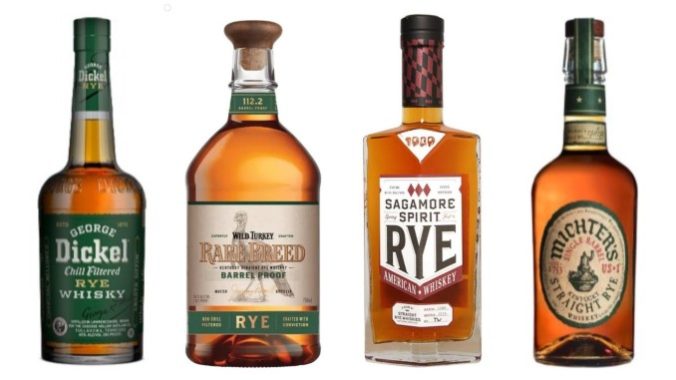
Cocktail Queries is a Paste series that examines and answers basic, common questions that drinkers may have about mixed drinks, cocktails and spirits. Check out every entry in the series to date.
It’s funny how there are so many ways to approach such a simple question as “How do I make ___ classic cocktail?” You can go general, as I did when I wrote this guide in 2022 to every aspect and variable you might consider in making a great Manhattan at home. But there’s also value in drilling in on a specific aspect of the challenge, especially if it’s the most important aspect: What whiskey should you really use, anyway? It’s the same logic I applied to this recent piece on the best possible variety of rums to use in a daiquiri, or its follow up examining the best whiskey to use in an old fashioned. Answer that question, and you determine what kind of drink you’re really making.
Now, when it comes to the Manhattan, I feel a greater pull toward classical technique than I did with the old fashioned. The latter has been fully absorbed by cocktail culture, to the point that you can specify nearly any type of spirit–the rum old fashioned, mezcal old fashioned, etc.–and it doesn’t feel particularly blasphemous or silly. But as for the Manhattan, I feel it genuinely rewards the purist: You want rye whiskey for this drink. Not bourbon, rye whiskey. And you’ll want to pick a sensible whiskey-to-vermouth ratio–thankfully, I’ve previously done an entire tasting based around Manhattan ratios.
Nor do I think you’ll want to use many fancifully “finished” rye whiskeys for this, i.e. spirits that have undergone secondary maturation in other styles of spirit or fortified wine casks. Let the classics play when you’re learning to make a great Manhattan, though I will admit that the Averna-based Black Manhattan is one of the best ways to occasionally put a twist on things.
As always, in making these picks I’m focusing on more widely distributed whiskeys that are relatively easy to obtain rather than more expensive and rare limited releases or craft whiskeys. My goal is that you can actually go out, buy these bottles and start stirring up some Manhattans tonight.
1. Rittenhouse Rye
ABV: 50% (100 proof)
MSRP: $25
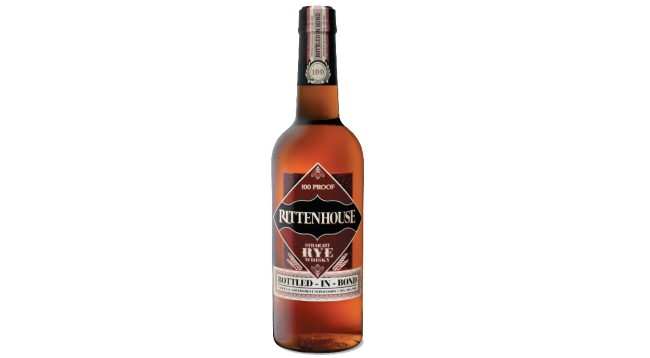
Heaven Hill’s rock-solid, dependable value rye whiskey also appears in my old fashioned list, which makes perfect sense: This belongs in pretty much any list where value is desired, and that has been the case for decades now. Rittenhouse gives you the 100 proof bang for your buck, while still possessing a respectable four year age statement. As with the old fashioned, a 100 proof shelf staple is always nice to have for a home Manhattan, allowing the whiskey to punch through your choice of vermouth with assertiveness, although I will allow that a mellow Manhattan isn’t necessarily a bad thing either, particularly for cocktail neophytes. But more often than not, I’ll turn to something in this proof range.
Rittenhouse continues to fly the flag for “Kentucky style” rye whiskeys with its 51% rye mash bill, in a time when so many have migrated toward the far higher rye style made popular by MGP of Indiana. This style, on the other hand, lends greater richness to a Manhattan, pairing nicely with sweet vermouth in its profile of brown sugar, pepper, grassiness, dried fruit and brighter citrus. Just a classic base for a home Manhattan, at a budget price. The classics are classics for a reason. Lest we forget, it once won our blind tasting of bottom shelf rye whiskeys.
Alternatives: Old Forester Rye Whiskey 100 Proof, Knob Creek Rye 100 Proof
2. George Dickel Rye Whiskey
ABV: 45% (90 proof)
MSRP: $25
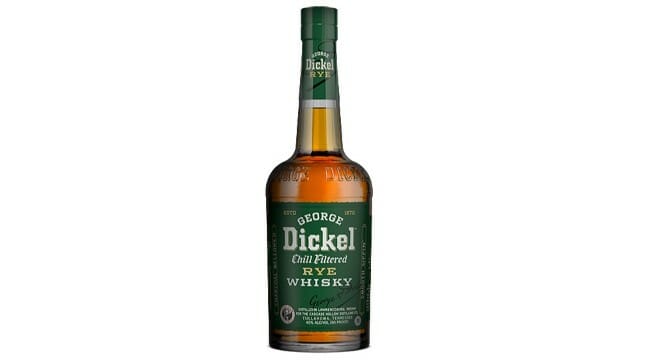
If you’re putting together a list contingent on rye whiskey, or cocktailing, then there’s going to be some MGP rye present–this is a certainty. The real question is, which ryes from MGP of Indiana do you really want to highlight? Dickel’s is one I’ve always found to be an interesting case, because it’s more accurately a product influenced by both distilleries. This is indeed distilled from MGP’s classic 95% rye mash bill, but Dickel then takes possession of the unaged distillate and instead ages it in their facilities in Tennessee, which has a significantly different microclimate than that of Indiana. This whiskey also undergoes the charcoal filtering through sugar maple charcoal as other Dickel/Tennessee whiskey products, resulting in something all its own.
The result is a rye whiskey that displays somewhat more richness and a deeper sense of caramelization than most other, similarly aged MGP ryes, while still retaining the depth of herbal, grassy and peppery flavors you tend to expect from Indiana ryes in this mash bill. The nose is quite citrus forward, with a “flamed orange peel” quality that pairs nicely with a little brown sugar sweetness on the palate, followed by notes that suggest cherry, lemon-orange citrus, bay leaf and cracked pepper. At 90 proof, this makes for one of the more effortless drinking Manhattans on the list, which isn’t necessarily a bad thing–though you may want to pair this one with a less intense vermouth, all the same.
Alternative: Redemption Rye Whiskey
3. Sagamore Spirit Rye Whiskey
ABV: 41.5% (83 proof)
MSRP: $35
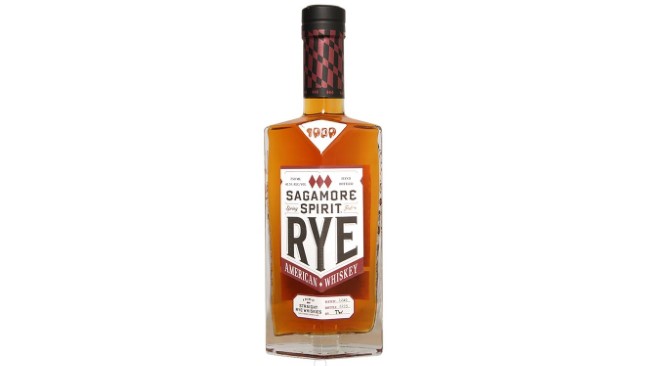
It’s a testament to the quality of this Maryland distiller’s process and blending skill that as they’ve slowly transitioned MGP rye out of their flagship product, the quality of that brand has actually increased. Sagamore Spirit opened its doors in the 2010s as one of many bottlers of 95/5 MGP rye out there, but over time their own distilling operation has slowly come into its own. Today, they’re still using a relatively small amount of MGP distillate, but the majority in each bottle is Maryland-distilled rye whiskey from a lower rye mash bill. The result is a lovely merging of styles, resulting in a 4-6 year rye whiskey that has become increasingly distinctive. These days, we’re even seeing more distilleries referring to their product as “Maryland-style” rye, in an increasingly clear reference to Sagamore’s efforts to bring awareness back to this regional style.
Sagamore’s ryes tend to combine candied citrus fruit notes with a good charge of baking spice, touching on cinnamon, clove and nutmeg. For mixing a Manhattan, this is definitely on the lower ABV end of the spectrum, so you may want to increase the whiskey portion of the ratio slightly to compensate, but the results are lovely–still quite characterful, and dangerously easy drinking. Also highly recommended is a foray into the more expensive Sagamore Double Oak Rye Whiskey, which receives an 18-month secondary maturation in newly toasted oak. Suffice to say, that process totally transforms this spirit, adding layers of toasted oak spice, coconut and marzipan. Taste preference is up to you: The flagship product delivers more traditional spice notes, while the Double Oak is a more decadent dram at a bit higher proof.
Alternative: Elijah Craig Straight Rye
4. Michter’s US1 Kentucky Straight Rye Whiskey
ABV: 42.4% (84.8 proof)
MSRP: $50
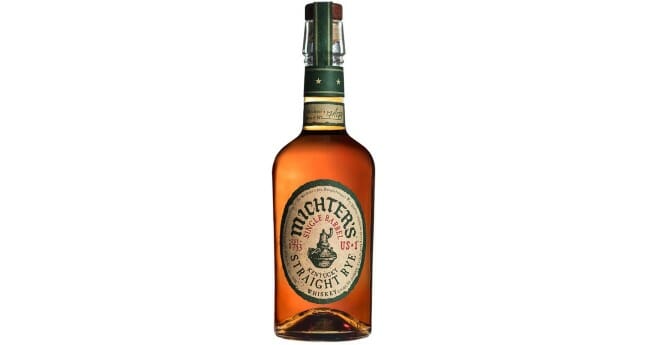
Michter’s has always had a somewhat more difficult task in the rye whiskey value proposition, offering a relatively lower proof rye whiskey flagship at a price point that is much steeper than the likes of the Rittenhouses of the world. And yet, there is an x-factor to their spirit that allows the Kentucky company to still carve out its own niche. This expression in particular has always been a lovely neat drinking rye, and it can be adapted to a lower-ABV Manhattan just as easily. Once again, this is a case where you might want a proportionally slightly higher amount of rye whiskey in your ratio, to make up for the lower proof point of the spirit.
Michter’s Rye stands out for character that reads significantly older/more mature than its reported 4-7 year age statement, particularly in the dimension of oak and baking spice that are present. The company makes skillful use of toasted barrels that add pastry/cinnamon bun notes to a buttery, unctuous spirit even at this lower proof. Their rye deemphasizes the more green, grassy, herbal side of the spirit and instead highlights more toasted oak spice, with candied ginger and leather suggesting the presence of older spirit in the blend. Unsurprisingly, it drinks very easily, though most whiskey geeks probably wouldn’t mind the proof being at least 10 points higher. Still, there’s an elegance here that isn’t present in most younger ryes, which can play well in a Manhattan.
Alternative: Wilderness Trail Bottled in Bond Rye Whiskey
5. Wild Turkey Rare Breed Rye Whiskey
ABV: 56.1% (112.2 proof)
MSRP: $60
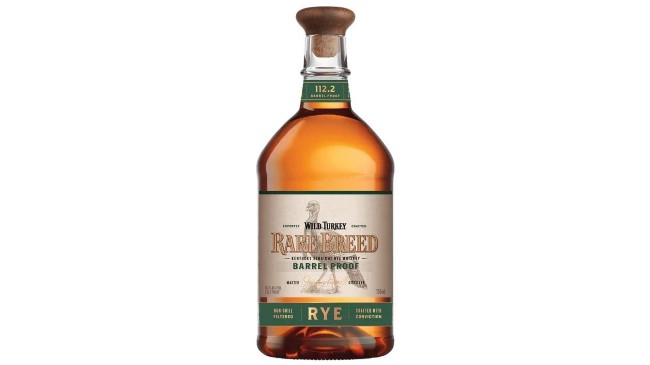
Sometimes, you just need to go big and brassy. When the delicate character of Michter’s or Sagamore Spirit isn’t what you’re looking for in a Manhattan, Wild Turkey is there to pick you up with a booming barrel proof expression that shows the more explosive side of rye whiskey. Non-age-stated but nominally a blend of 4-8 year rye whiskeys, Rare Breed Rye takes the cult popularity (and solid value) of the company’s cask strength bourbon and transplants it to the rye arena, where it’s an obvious candidate for spirit-forward cocktails. My suggestion: Try mixing one of these up in a Manhattan against a 90 proof rye, and see which taste profile actually appeals to you more, because there’s not just one “right answer” here.
Rare Breed Rye offers strong floral and herbal aromatics, touching on wildflowers, pine, mint and charred oak. It celebrates the rye grain on the palate, with bready/doughy rye character that segues into bright citrus peel, dried herbs, deep peppery spice and funky rickhouse oakiness. Hot cinnamon candies are a constant reminder of the advanced proof. Suffice to say, this won’t be getting lost in any cocktail, and you can use your boldest vermouth (or even amari) in balancing it out. You’ll probably want to stir well on this one, as a degree of dilution is going to be helpful. The rare Manhattan that might be acceptable on ice, perhaps? It’s up to you.
Alternative: Pikesville Rye Whiskey
6. WhistlePig 10 Year Rye Whiskey
ABV: 50% (100 proof)
MSRP: $80
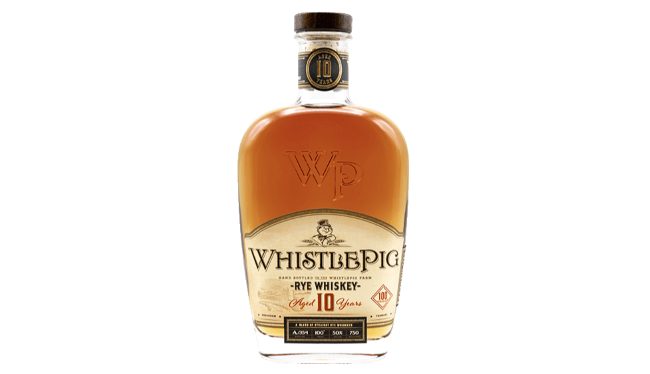
It’s funny to think back to 5-10 years ago, when WhistlePig’s flagship product probably would have been decried as expensive or “overpriced” by many whiskey geeks, accustomed as they were to a whiskey scene with a plethora of strong values. These days, on the other hand? Well, after years of huge price increases and retailer price gouging, the value proposition of this 10 year old, 100 proof rye whiskey has risen substantially, and the MSRP of WhistlePig 10 Year has barely budged over the years, though it does seem to have significant variation in various markets. Regardless, perhaps it was “overpriced” at one point, but it certainly doesn’t feel that way today, particularly at a time when so many craft ryes are creeping toward $100 with much lower age statements.
Tasting: 3 (Deceptive) “Rye Smash” Cocktails from WhistlePig
The WhistlePig brand, meanwhile, has gotten somewhat bogged down in a never ending flow of silly line extensions such as their deceptive canned cocktails, but at the very least the flagship brand is still as delightfully flavorful and rye-forward as it ever was. The “10/100” possesses a wonderfully spicy profile that hits both the heights of rye spiciness (anise, pepper) and everything else on the spice rack (allspice, cinnamon, clove), with a twist of sweet citrus, butterscotch and vanilla. It plays beautifully in a classic Manhattan, with enough proof to shine through in any application, and it makes a great Black Manhattan as well. It’s not exactly the cheapest option, but it remains fairly easy to find, which is nice. When a luxe Manhattan is what you’re looking for, it’s a classic option.
Alternative: Jack Daniel’s Single Barrel Rye Whiskey
Jim Vorel is a Paste staff writer and resident liquor geek. You can follow him on Twitter for more drink writing.







































